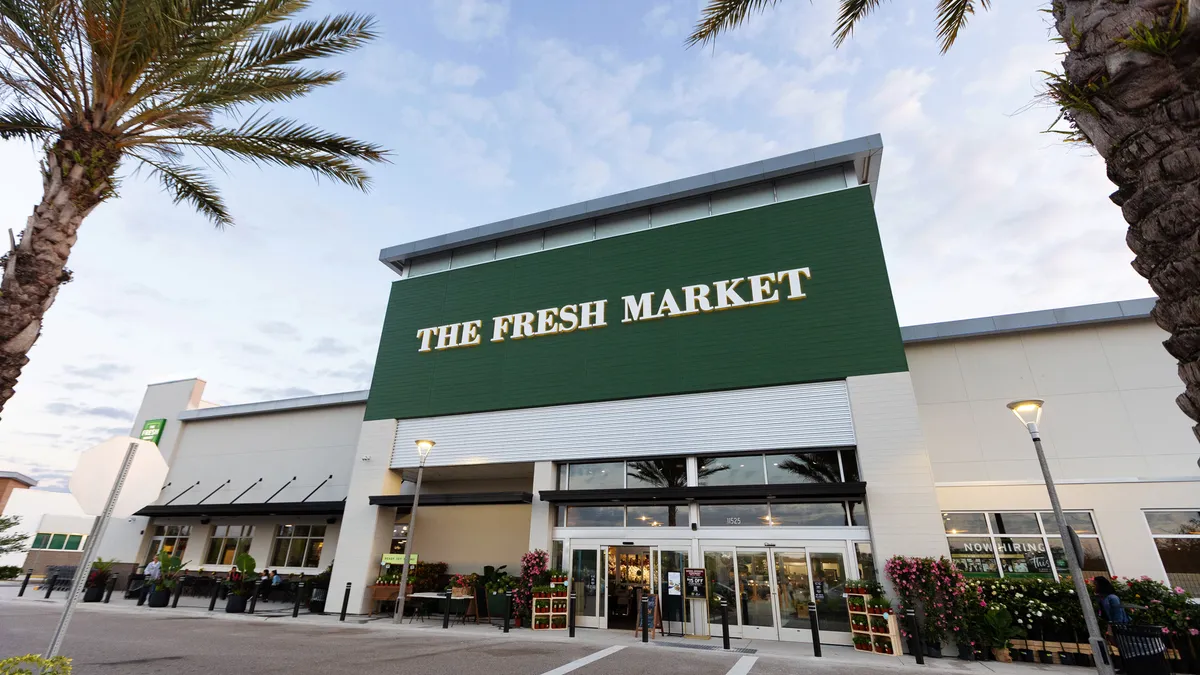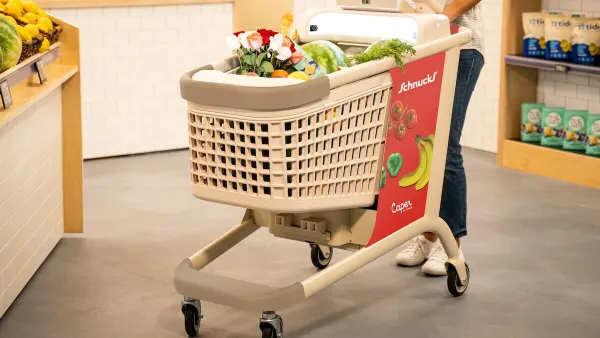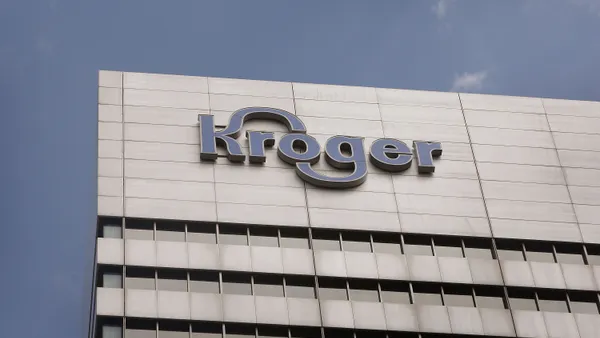Dive Brief:
- Whole Foods on Wednesday converted a Chicago store located near DePaul University to delivery-only service — its sixth “dark” store to open in recent weeks amid record demand for online groceries, the company confirmed to Grocery Dive.
- Whole Foods’ other delivery-only stores are in Austin, Texas; San Francisco; Castle Rock, Colorado; Baltimore and the Bryant Park area of New York City. The Austin, Castle Rock and Baltimore locations are new stores that had not yet opened to the public, while the San Francisco location is still open to foot traffic between 9 a.m. and 1 p.m., with at-risk shoppers able to access the store starting at 8 a.m.
- With stay-at-home orders in place, customers have generated unprecedented demand for grocery delivery,” a Whole Foods spokesperson told Grocery Dive. “As we navigate the challenges associated with COVID-19, we continue to find ways to increase delivery availability while navigating safety measures and social distancing.”
Dive Insight:
Whole Foods is being very selective in the stores it’s choosing to convert to dark locations, making sure it isn’t turning away too many customers who prefer in-person shopping. Three of the six stores were not yet open to the public, while the Chicago and New York City stores have other locations nearby. The San Francisco location, located in the city’s SOMA neighborhood, is still open half days to nearby customers.
The Chicago location was also likely seeing traffic declines, with DePaul University canceling classes in March. Likewise with the Bryant Park store, which is situated in a midtown office sprawl that’s quieted considerably due to work-from-home policies.
Converting its retail stores into online warehouses also helps owner Amazon fill more orders for its Amazon Fresh service, which sells many Whole Foods store brand products. The strategy seems to be helping: Amazon has lifted most of its new customer waiting list restrictions for Amazon Fresh, which it implemented last month amid rocketing e-commerce demand. Eighty percent of Prime members are now able to access the service, according to a report in C|net.
Amazon has also converted a Woodland Hills, California store that was supposed to be the first in the company’s yet-to-be-named new supermarket chain to a dark-store operation. That location is reportedly helping fill delivery and pickup orders for four nearby Whole Foods stores.
The dark-store strategy has been adopted by numerous grocers during the pandemic, from independent operators to chains like Giant Eagle, Kroger and Stop & Shop. Local stores told Grocery Dive they’ve made the switch primarily due to safety concerns, since removing customers reduces potential exposure to the virus. Grocery chains, however, appear to be guided primarily by shifting consumer demand, only converting stores that were not open yet, slated to close, or situated in areas where other company stores are open nearby.
Giant Eagle recently converted a store in the Pittsburgh area to a “contactless” model — its third location to transition in recent weeks — while Stop & Shop converted a store in Brockton, Massachusetts, that was slated to close to pickup and delivery service. Kroger is also testing a pickup-only store in the Cincinnati area.
The decisions by grocers to establish dark stores underscores record consumer demand for online groceries and the lengths retailers are going to in order to fill it. From March to April, online grocery sales rose 37% to more than $5 billion, according to Brick Meets Click. Shoppers have faced long wait times and shuttered services in some cases.
But companies have staffed up and retooled their operations and are bringing those wait times down. Instacart, which has more than tripled its ranks of personal shoppers, reported that 90% of its orders last week were filled same-day or next-day.














